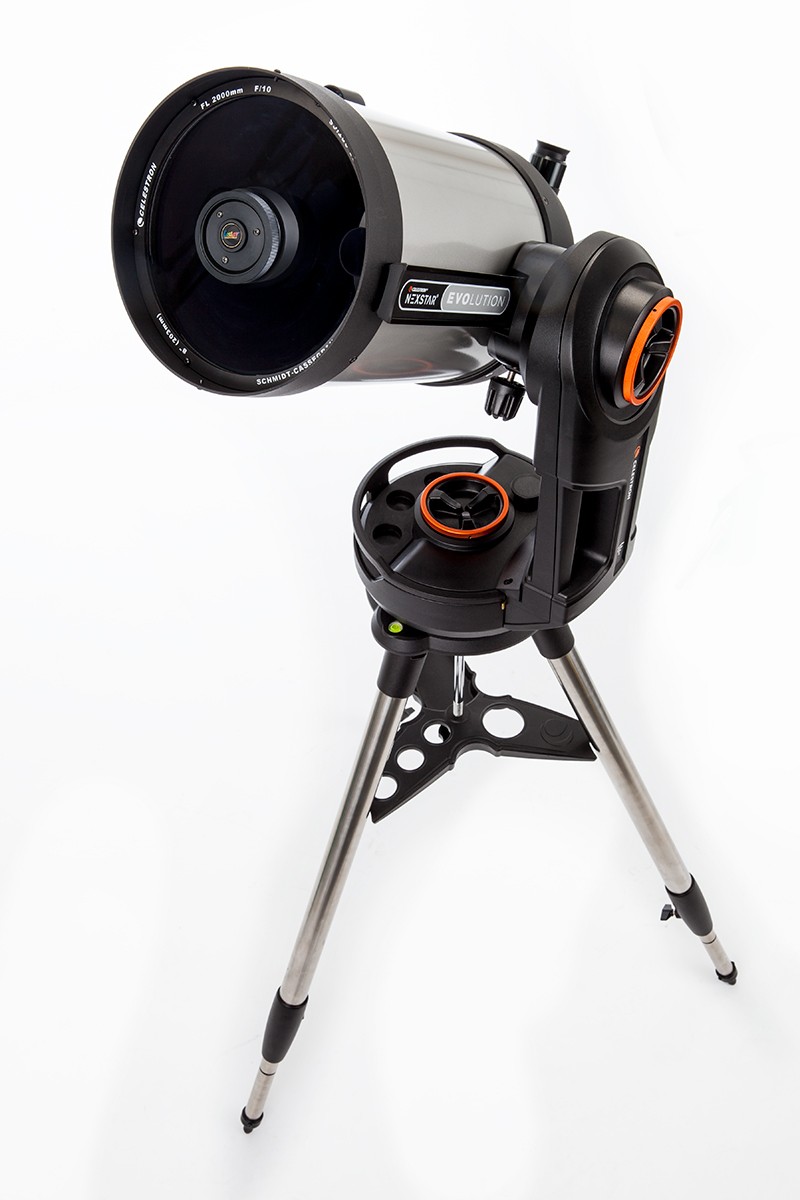Telescope innovation and improvement continues apace, nowhere more evidently than with the Celestron NexStar Evolution 8, an 8-inch Schmidt-Cassegrain telescope on a computerized single fork arm. This altaz mount sits on a stainless steel tripod and comes with a star diagonal, Celestron’s StarPointer red-dot finderscope, 40mm and 13mm eyepieces, and a mains power cable.
The single fork arm mount has a useful carry handle, but it is within the mount’s single arm that the innovation begins. For starters there is an integrated lithium-ion phosphate battery. With this charged up you don’t need an external powerpack – a long overdue touch. The mount will also function with the power cable connected.
The other innovative aspect to be hidden inside the mount is a built-in Wi-Fi network. Using this, you can connect wirelessly with a smartphone or tablet to control the scope, although a hand controller is supplied, so tradition hasn’t been thrown completely out of the window. Although you can buy add-ons that enable other popular mounts to be controlled by a smartphone or tablet, this is the first scope to have this capability on board.
 |
| Celestron NexStar Evolution 8, an 8-inch Schmidt-Cassegrain telescope on a computerized single fork arm. |
With all this hi-tech wizardry built in, assembly and basic set-up was straightforward. We switched the mount on, connected our tablet to the SkyQLink Wi-Fi using the free Celestron SkyPortal app (available for iOS and Android) and performed the star alignment routine. We aligned on each target with ease; most lay within the central 50 per cent of the view in the 40mm eyepiece. Accuracy was improved by aligning with the 13mm eyepiece; after doing this, most objects were in the centre of the 40mm eyepiece, and in the 13mm they were all within the inner 50 per cent.
The optics are Fastar compatible, so the secondary mirror can be replaced with a Fastar/HyperStar unit onto which a CCD camera can be mounted. This speeds up the scope’s focal ratio by a factor of five to f/2 – especially useful for deep-sky imaging.
Our tests on Vega in Lyra revealed the optics to be very good, the bright star being pin sharp 85 per cent out from the center of the view, with only some very slight coma present. We picked out double star Albireo in Cygnus and enjoyed the golden and pale blue hues of its components in both 40mm and 13mm eyepieces. Moving across the sky to Iota Cassiopeiae, we could split the triple star nicely with the 13mm eyepiece.
Within the Solar System, Saturn looked splendid, with a band visible on the planet’s disc, the Cassini division clear to see and several moons in attendance. The nearly first quarter Moon showed off a wealth of craters and filled half of the 40mm eyepiece, showing that this accessory has a 1º field of view.
Five out of five rating from Sky at Night Magazine.
Read more: skyatnightmagazine.com